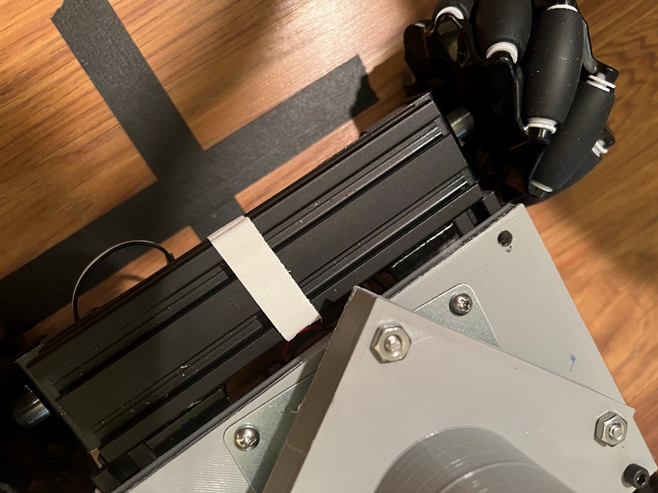Weeks 14-15: Sept 20 - Oct 3
- Group Work
- Oct 2, 2022
- 2 min read
In the past two weeks, Neil and Jacob worked on finding a solution to holding the horizontal arm in place without any power applied to the system as suggested by Dr. Ejaz. During their research, many ideas were considered. The first was a pre-built locking mechanism that attaches to the servo motor. This idea, however, is not viable as these types of locking systems can only be custom ordered meaning, they are expensive and would not arrive in time. When an inquiry was made to a company that custom manufactures them, a quote of 16-20 week was given. The next idea considered was to switch from a servo motor to a stepper motor with a locking mechanism already attached, the issues with these types of motors are that they do not have enough torque to meet the requirements laid out in the project proposal and they also consume much more power for lower torque when energized. The highest torque rated stepper within our budget found was 3.3Nm whereas we would need approximately 6Nm. Above that, any stepper motor with a higher torque would require much more power. With these ideas ruled out, we then changed our mindset to a locking mechanism separate from the motor itself. Two ideas were considered initially including a solenoid to lock the motor gear in place and a worm drive gear system. Each of these ideas has its own drawbacks and benefits. The solenoid, for instance, produces heat, from 65 - 105 degrees Celsius, when it is engaged and may get hot enough to melt the 3-D printed material or PVC pipe it would be attached to. This means that we would have to limit it’s time in the on position (which would be unlocked in our case) so the time the user can spend moving the arm would be limited to protect from overheating. With the worm drive gear system, the problem is design time and difficulty. This system would create a need for a redesign of many of our existing parts and would take much longer to achieve even with parts that can be bought. The final idea we came up with to fix this issue was to keep the existing system the same but use a small stepper motor with a linear lead screw to act as a locking solenoid. The stepper motor system is picture below.

This system would attach to the existing vertical arm and the stepper motor would turn the screw to move a slider along it, in the vertical direction, with a gear lock attached. Once the lock is in place, the stepper motor, as well as the rest of the system, would be able to be powered off and the arm would hold its position as the screw would not allow for downward movement. This idea requires minimal redesign, a small change in the power budget, as it requires little energy to move, and would solve the issue at hand.


Comments